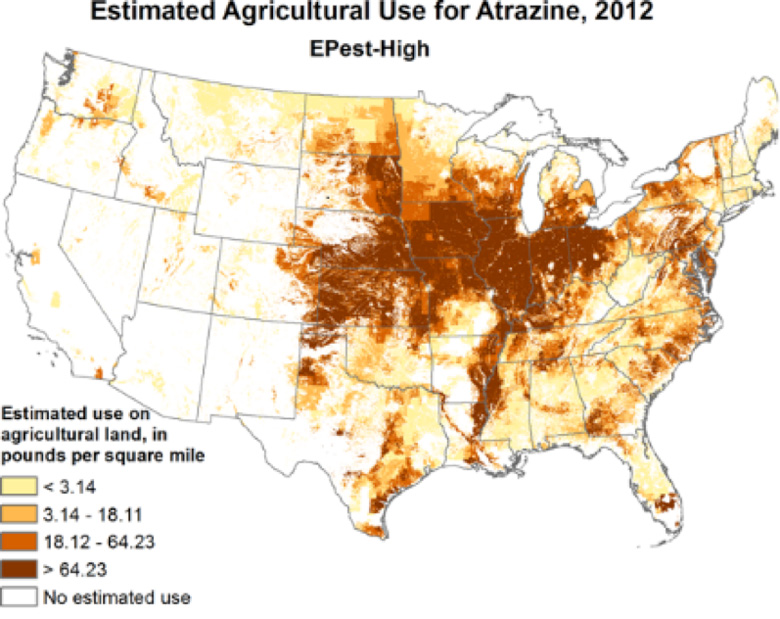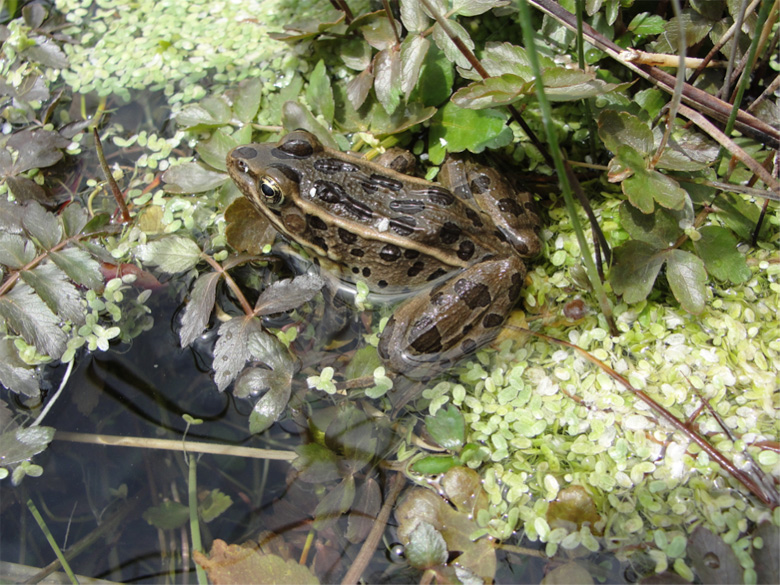- The U.S. Environmental Protection Agency (EPA) offers too much influence to industry over its risk-assessment process for pesticides, allowing manufacturers to design, fund, and conduct toxicity studies, according to a paper.
- In the case of the herbicide atrazine, the EPA accepted only one industry-funded study for review in its 2007 and 2012 risk assessments.
- A series of simple steps can improve the EPA process but they will likely require legislative action to implement, according to the paper’s authors.
Pesticides are ubiquitous and important; but how safe are they, and who answers this crucial question? According to a paper published in the journal Bioscience, the U.S. Environmental Protection Agency’s pesticide evaluation process may be riddled with flaws, allowing industry too much power.
The paper, led by biologist Michelle Boone of Miami University in Ohio, uses the weed-killer atrazine as an example to support its conclusion that the EPA’s risk assessment process is rife with conflicts of interest and other problems.
Atrazine is widely used in the U.S. and around the world, and is one of the pesticides most commonly found in drinking water. It is often used on lawns and golf courses but the vast majority is spread over crops, such as corn and sorghum.
Scientists have raised concern about atrazine’s effects on health, both in wildlife and in people. For instance, exposure to atrazine during early life has been shown to cause male tadpoles to develop into female frogs, and separate research indicates similar effects in other species. In humans the harms are less clear, but studies have suggested that atrazine exposure can lower men’s semen quality and babies’ weight at birth.

In 2003, the European Union banned atrazine due to the unavoidable water contamination that follows its use and because uncertainty remained over its effect on human and animal health.
During the same year, however, the EPA approved the pesticide for continued use in the U.S.
Looking at two subsequent risk assessments that the agency conducted on the effects of atrazine on amphibians in 2007 and 2012, Boone’s paper states that atrazine’s manufacturer, the Swiss company Syngenta, provided the only data considered by the agency. The authors also note that the EPA often works with manufacturers to establish studies’ methods and design, although they do not suggest this was the case with atrazine.

The authors write that such situations show that conflicts of interest are “ingrained” in the EPA regulation process.
By crafting complex and expensive studies, industry is left as “the only entity that can afford to conduct the research to the USEPA’s specifications,” the paper states. Outside researchers are often squeezed out of the process due to the high cost of conducting such studies.
In the case of atrazine, strict study criteria resulted in the agency ranking a number of studies conducted by third parties as invalid for failing to reach basic scientific standards, and excluding them from its risk assessment. The agency ranked other third-party studies as qualitative for failing to meet different criteria, such as using the wrong kind of equipment, and excluded them as well. However, the authors argue that failing to meet one or two of the strict criteria does not necessarily negate a study’s value and should not disqualify it for consideration.
As a consequence of industry influence over the experimental design “all or most of the data used in risk assessments may come from industry-supplied research,” the authors write.
In the end, the EPA relied on only one out of 75 laboratory studies on atrazine in conducting its 2007 and 2012 risk assessments of the herbicide. The agency rejected all field studies outright, since the single lab study turned up no effects.
The authors suggest that a broad-spectrum view of a less rigid range of studies is required. They point to a 2010 paper published in Environmental Health Perspectives that analyzed the results of 125 studies to determine atrazine’s effect on freshwater fish and amphibian species. The results of this broader analysis differed greatly from the single industry-funded study included in EPA’s risk analyses, concluding that atrazine can “alter the timing of metamorphosis, reduce the size at metamorphosis, alter antipredator behaviors, reduce immune function, increase infection, alter gonadal morphology, and affect gonadal function,” Boone and her co-authors write.
By contrast, the single study the EPA relied on looked only at a species that does not live in North America, and found that atrazine had no adverse effects on amphibians.
“As experienced researchers working in the field of ecotoxicology, we are concerned that the USEPA’s risk assessment process can proceed using a narrow portion of the available data and can be based exclusively on industry-supplied studies,” Boone and his co-authors write.

Another problem raised by the paper is the lack of attention EPA gives to the recommendations of scientific assessment panels (SAPS). These panels review the EPA’s decisions and suggest improvements or changes.
According to the researchers, three separate SAPs convened to review the EPA’s atrazine assessments in 2003, 2007, and 2012 gave similar advice: use North American amphibians in testing and conduct field studies. “It is unclear how or why the USEPA may elect to ignore the consistent advice of multiple panels,” the authors write. The EPA doesn’t need to explain its decision, and exercised this right on all three occasions.

“Because of potential or real biases, industry-supplied studies can obscure the real impact of a pesticide, which may result in a sluggish regulatory process most advantageous to manufacturers,” the paper states.
To solve the problems of industry influence in the EPA’s pesticide risk-assessment process the researchers suggest four steps: eliminate conflicts of interest by having industry bear the cost of testing and having independent bodies with no financial incentive conduct the studies; take a ‘meta’ approach to analysis by including qualitative data; use field data; and increase transparency by explaining decisions to accept or reject SAP recommendations. To accomplish all this, they write that legislative action will be necessary as industry “will be reluctant to relinquish its influence.”
Concluding with a quote from Rachel Carson, who wrote that man has left a “depressing record of destruction, directed not only against the Earth he inhabits but against the life that shares it with him” the authors recall that the initial aim of the EPA was “to stem the tide of this destruction.”
Instead, they write that in its current problematic state the EPA “places human health and the environment at the mercy of industry.”
Citations:
- Boone MD, Bishop CA, Boswell LA, Brodman RD, Burger J, Davidson C, Gochfeld M, Hoverman JT, Neuman-Lee LA, Relyea RA, Rohr JR, Salice C, Semlitsch RD, Sparling D, Weir S (2014). Pesticide regulation amid the influence of industry. BioScience Advance. 1093.
- Rohr JR, Schotthoefer AM, Raffel TR, Carrick HJ, Halstead N, Hoverman JT, Johnson CM, Johnsn LB, Lieske C, Piwoni MD, Schoff PK, Beasley VR (2008). Agrochemicals increase trematode infections in a declining amphibian species. Nature 455: 1235–1239.
- Rohr JR, McCoy KA (2010). A Qualitative Meta-Analysis Reveals Consistent Effects of Atrazine on Freshwater Fish and Amphibians. Environmental Health Perspectives 118: 20-32.
